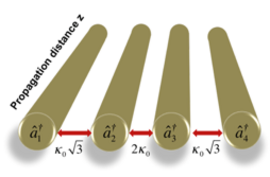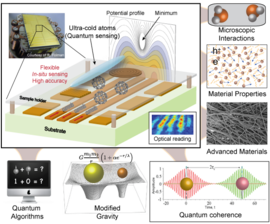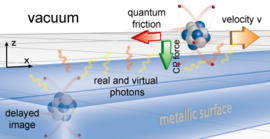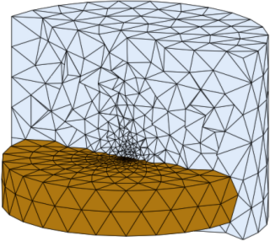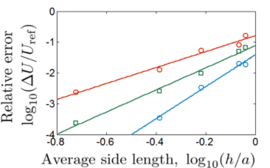1.1 Fundamentals of Extreme Photonics
Project coordinators: O. Smirnova , K. BuschT3: Quantum electrodynamics in structured space
Current Members: K. Busch, F. Intravaia, C. Egerland, M. Oelschläger, A. Perez-Leija, D. Reiche,F. Trigub, K. Tschernig, P. Varytis
This topic focuses on the theory of light-matter interaction in complex quantum photonic systems. Specifically, research in this field aims to discover and investigate novel physical effects, to develop concepts and designs for functional elements (e.g. quantum sensors) and to provide interpretative as well as predictive support for experiments. Starting from fundamental principles, it utilizes a synergic combination of analytical and numerical tools to go beyond the state-of-the-art.
The activities can be grouped in the following two subfields:
Quantum Photonics: One of the most promising routes for realizing practical quantum technologies lies in hybrid approaches. They combine nano-photonic elements with concepts of traditional quantum optics. These quantum photonic systems include cold atoms trapped and manipulated in/near micro- and nano-photonic environments (“atoms chips”) as well as single/few photons that traverse integrated optical networks comprised of ordinary waveguide- and/or Photonic-Crystal-based functional elements with embedded few-level emitters and single-photon sources & detectors.
Fluctuation-induced phenomena: Fluctuations are omnipresent in nature. As a consequence of the Heisenberg uncertainty principle, they pervade the quantum vacuum even at zero temperature, rendering the vacuum by no means unique. Instead, it is strongly dependent on the material structures or the motion within it. This feature produces measurable effects, which have important applications in modern quantum technologies and fundamental implications in many fields of physics ranging from microscopic (atoms, cells) to cosmological sizes (black holes, dark energy) systems. Prominent examples are van der Waals/Casimir forces in equilibrium or non-contact frictional forces in non-equilibrium configurations.
